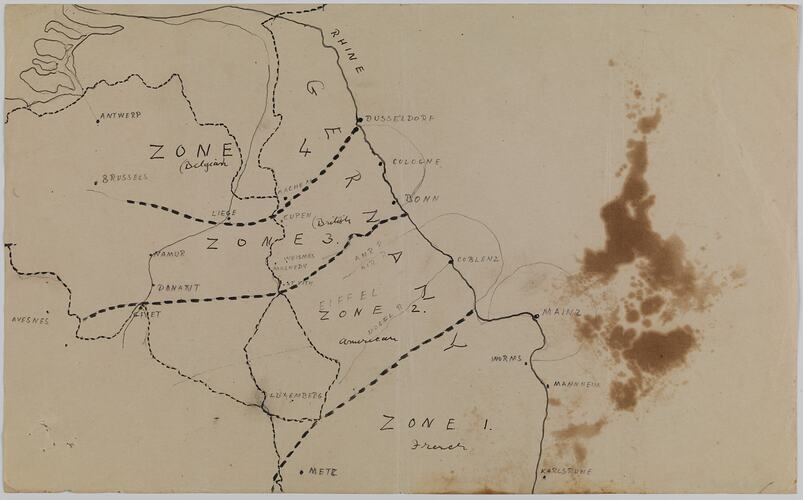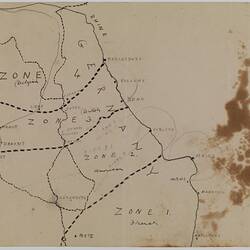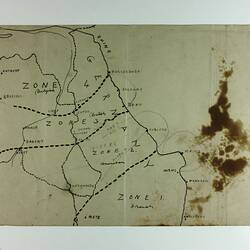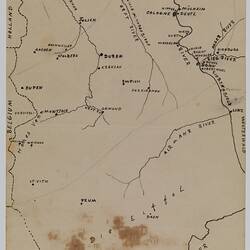Summary
Alternative Name(s): Rhineland Occupation Map
Map of the occupied Rhineland in Germany after World War I, showing Zones 1 to 4 occupied by France, Belgium and American forces.
According to Joachim Schröder and Alexander Watson, the ceasefire agreement from 11 November 1918 'merely provided for the Allied occupation of the left bank of the Rhine and three "bridgeheads" near Cologne, Mainz, and Koblenz. The German troops were forced to withdraw behind a ten kilometer wide neutral zone along the right bank of the Rhine.' (Occupation during and after the War (Germany), 2016). Under negotiations for the Treaty of Versailles four occupation zones were established, to be progressively vacated by the Allied forces over the following years; the Rhineland was to be demilitarized. The 1925 Locarno Treaties confirmed that the Rhineland should continue its demilitarized status permanently, and that the Allies should complete their withdrawal by 1935; in fact they had withdrawn by 1930. German military forces re-entered the Rhineland on 7 March 1936, in violation of the Versailles and Locarno treaties, changing Europe's balance of power and leading to World War II.
Part of the collection of World War I memorabilia donated by Sergeant John Lord (#6252), although it is believed that not all of the material relates to his own war service. However, John Lord was attached to the 13th Australian Field Ambulance when it acted as the Advanced Dressing Station during the Battle of Hamel and so would have been one of the Australian troops who received these 'orders' for his part in the battle.
John Lord was 19 years old when he enlisted with the Australian Imperial Forces in June 1915. Originally part of the 1st Australian Stationary Hospital, 11th Reinforcement; Lord was transferred to the 13th Australian Field Ambulance upon its formation in February 1916. He subsequently moved to the headquarters of the Assistant Director of Medical Services, 4th Division, in December 1918 where he seems to have spent the remainder of the war. Although listed as 'effective abroad,' Lord returned to Australia on 30 October 1919, and was discharged from service on 12 March 1920. He died in 1951.
Physical Description
Single sheet with hand drawn map in black ink and pencil on paper. There is extensive brown staining to the right hand side of the page.
More Information
-
Collection Names
-
Collecting Areas
-
Acquisition Information
Donation from J. Lord, 1986
-
Place & Date Depicted
-
Compiled By
-
Inscriptions
Handwritten, front: 'GERMANY / ZONE 4 (Belgium) / Zone 3 (British) / Zone 2 (American) / Zone 1 (French)' and further text.
-
Classification
-
Category
-
Discipline
-
Type of item
-
Primary support
330 mm (Width), 205 mm (Height)
-
References
Joachim Schröder and Alexander Watson, 2016. Occupation during and after the War (Germany), [Link 1] accessed 19 July 2016. 'Remilitarization of the Rhineland', Wikipedia, [Link 2] accessed 19 July 2016.
-
Keywords
Australian Army, World War I, 1914-1918, Wars & Conflicts, Maps, World War II, 1939-1945, German Occupation





